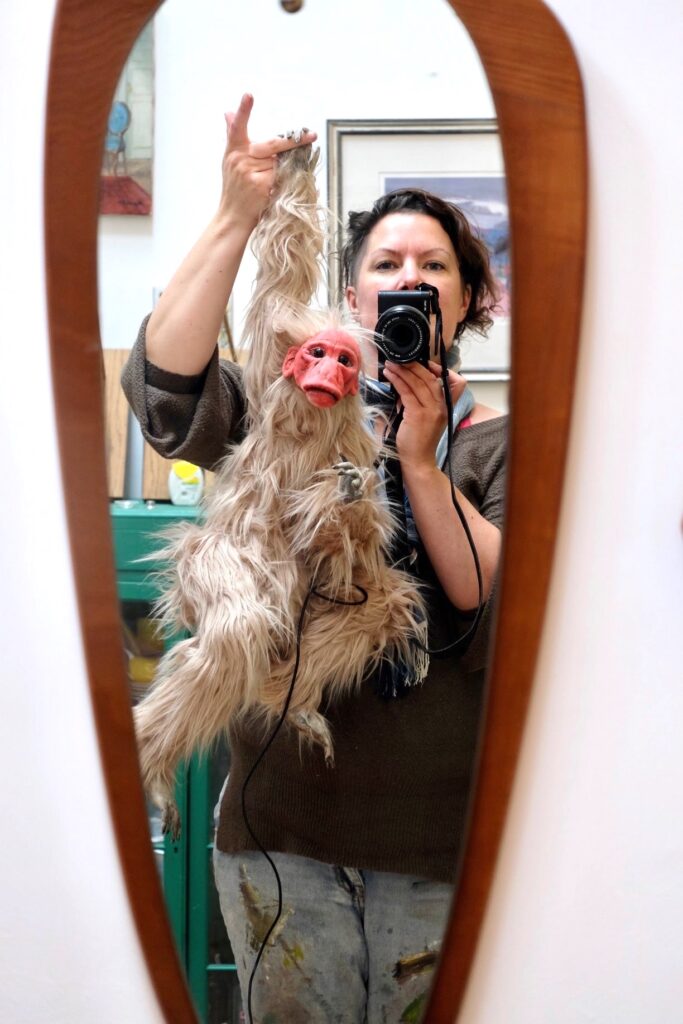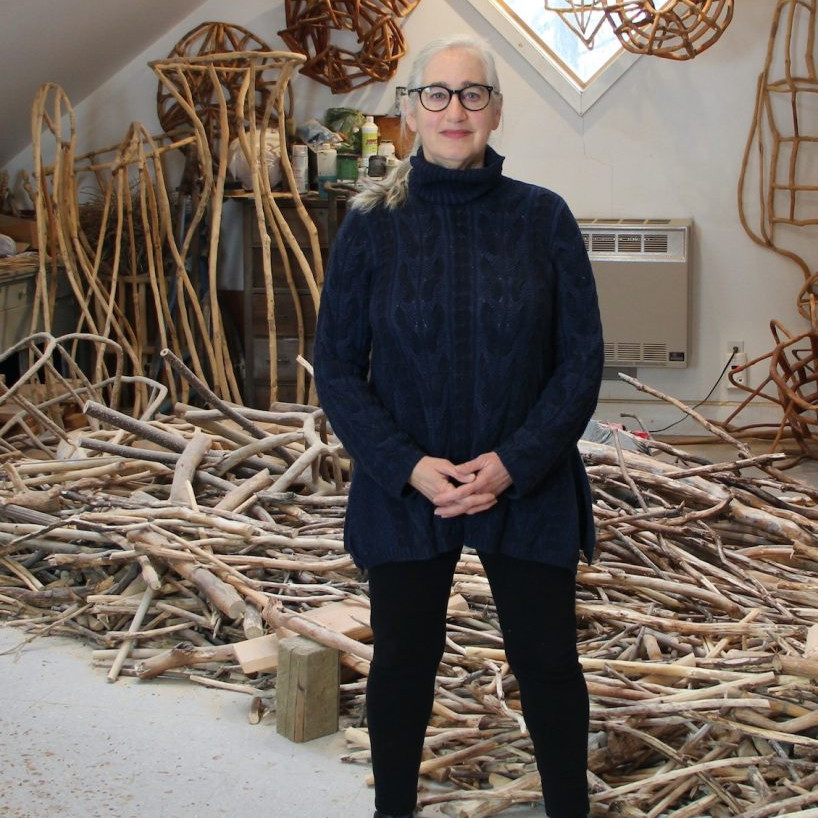Julia Levander Drew Textile Sculptor
Can you expand on the terminology of fake taxidermy – fauxidermy?
It was a good word to use in the beginning when I was mostly doing quirky and colourful wall mounted deer and Highland coos. As my work has developed however, I feel it may not be the best word to describe them as I’m trying to tell more of a story with the characters now. I’m not sure how to describe them best, “Textile Sculptures” I guess but it sounds a bit dry.
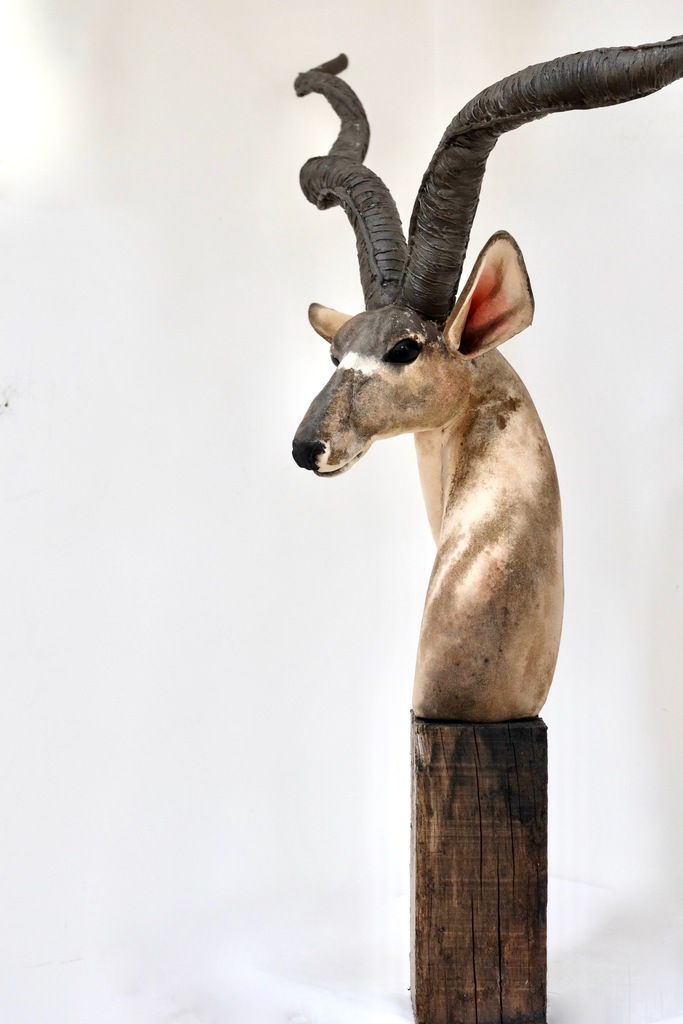
How has your knowledge in costume design, make and develop your fauxidermy?
Costume design and clothes making was a great introduction to sewing and I was also using that skill in the years I made art dolls. After meeting my husband on a zebra crossing in Sydney, Australia and moving from Sweden to the wild Highlands of Scotland in 2004, I got in to art doll making and was creating those as a hobby for 6 years.
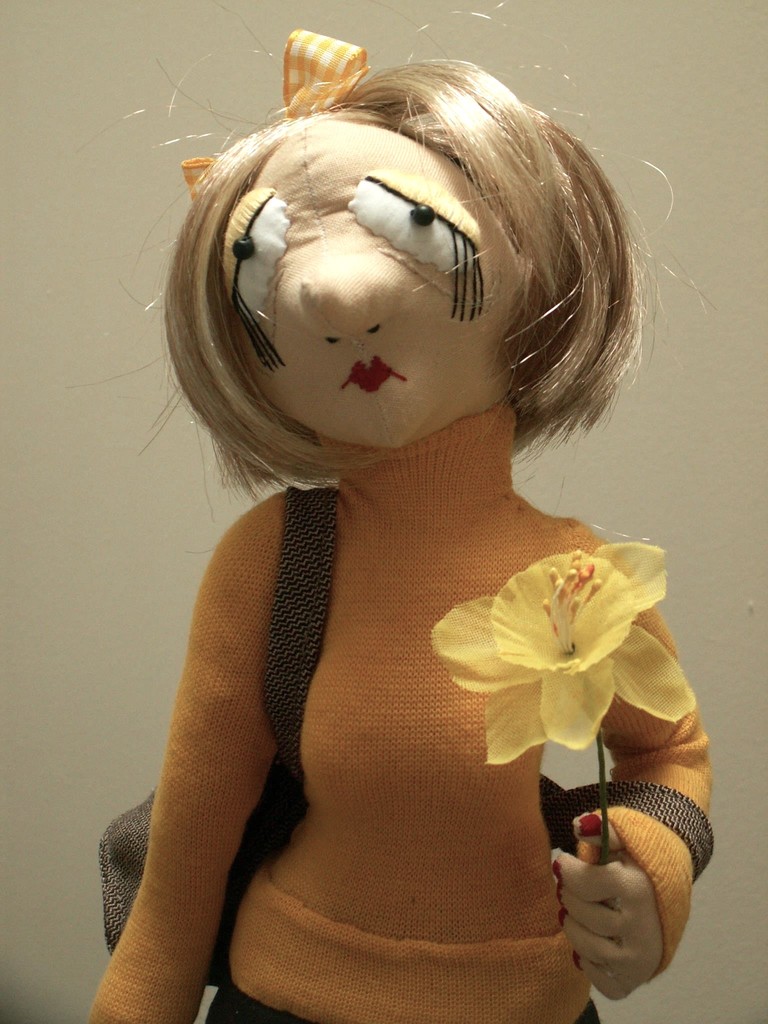
2010 I totally lost inspiration. It was quite upsetting for me as my well being is tied to my creativity and if I don’t create I feel restless and lost. Gardening and baking saw me through the two years I didn’t sew at all and it wasn’t until I had our first daughter that inspiration returned, and I developed my fauxidermy. I still have my first ever deer head, she’s called Elisabeth the 1st.
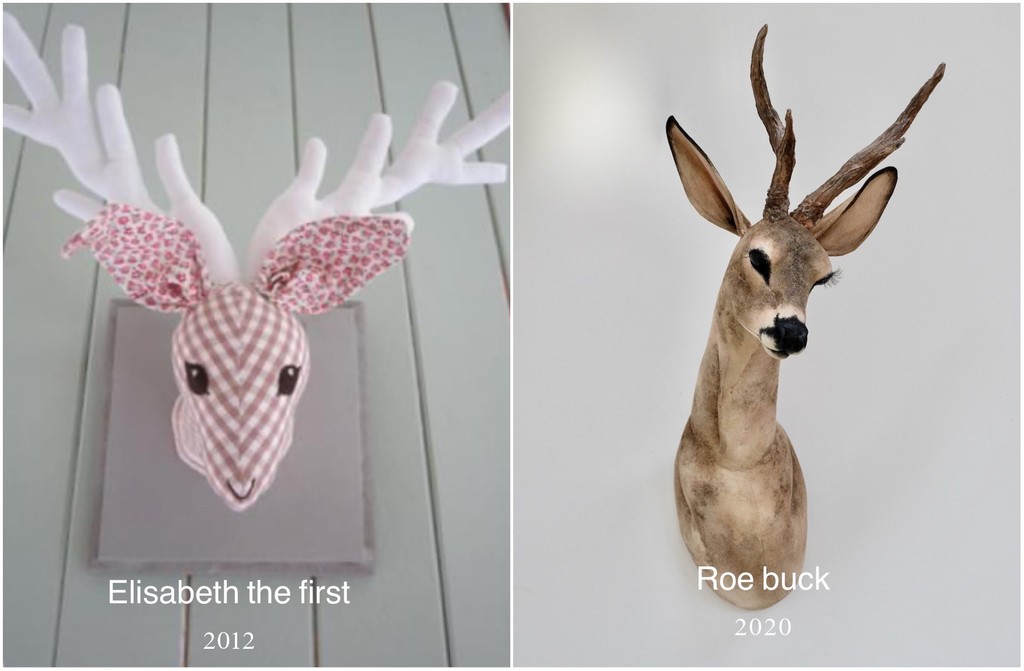
In retrospect I think the reason I lost my inspiration with the dolls was because I never let myself develop, the style of them stayed the same from the third (the first and second dolls were disasters) to the last and I felt trapped. With my animal sculptures I decided to never shy away from an idea and always try different things. My work mantra is “I make what I want”. Simple and effective and I think it has helped me develop.
Why are you reluctant to take on commissions?
This is tied to my inspiration. Inspiration is such a powerful force in my work and I have come to know better than to ignore it or work against it. If I am not inspired work grinds to a halt and nothing gets done, I sit at my desk and stare. When I’m inspired I can leap out of bed at 4:30am to get to work. I have learned this about myself and let myself make what inspires and due to my awesome followers on social media even the most “out there” pieces have found happy homes. I can be nudged in certain directions and every once in a while I’ll take on a commission but it needs to be something that excites me.
Which comes first the fabric or the animals?
In the beginning, when I was working with an array of fabrics I’d say it was the fabric combinations that came first. I loved to pick out juicy combos and then work out who would suit it.
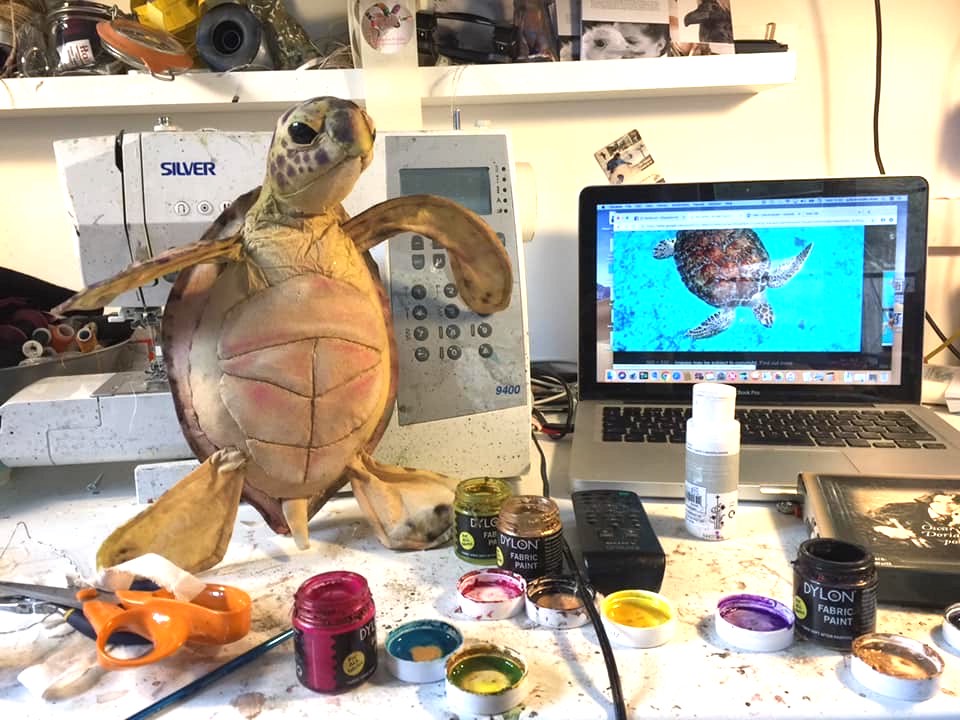
The past few years I have more and more turned to unbleached cotton that I sculpt and then paint with textile and acrylic paints so now it’s the animals that comes first. Or an emotion, or a position, or a relationship… or something else.
You comment, ‘I create my animals freehand’ briefly discuss the process you take to make a single animal?
I am self taught and have had to work out my process, what suits me and what works. In the beginning I was actually embarrassed that I never use patterns, I thought it seemed lazy to not create patterns for each piece but now I am confident enough to be free of that. I have the fabric in my lap and cut without pattern or drawings. My husband would say that I cut in my lap because my desk is too messy and he does have a point. But it works for me. I get an idea in my head and it’s a bit like being possessed, the piece needs to come out before I can move on. I have tried to ignore the crazier pieces for something more “sale able” but I just can’t get past it so it’s quicker to just make it. A bit like exorcism. When I have cut it out, I sew it on my sewing machine, his name is Maximus, and stuff the parts with synthetic stuffing.
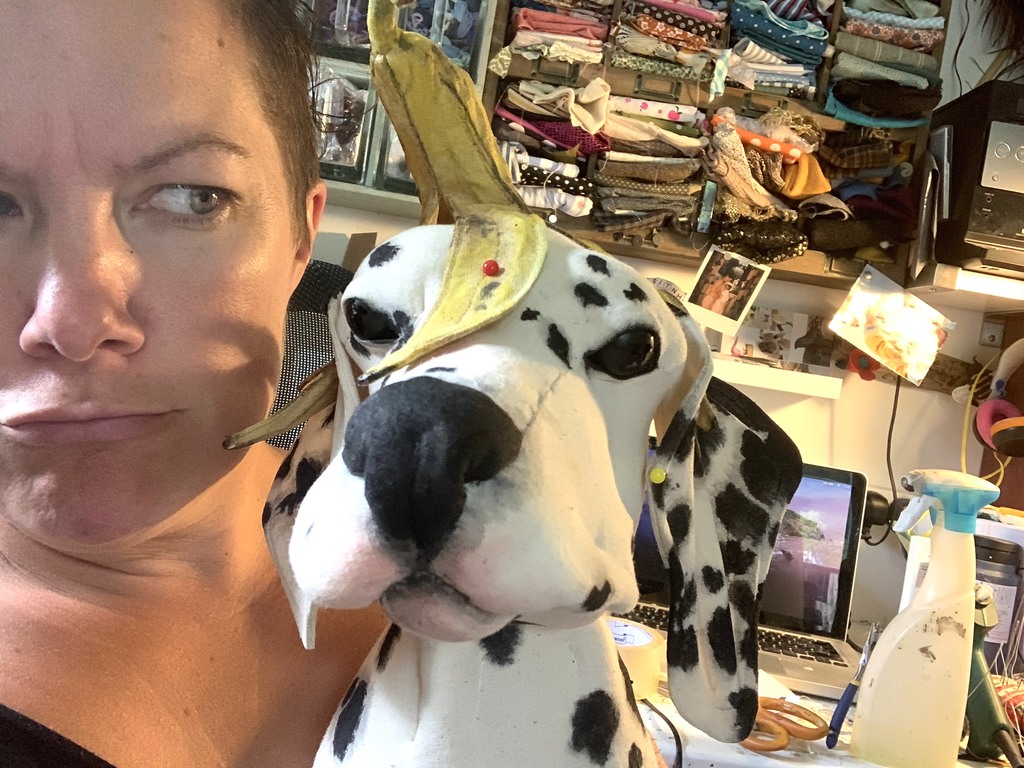
I would love to find a biodegradable substitute but have not managed yet. I then use this base to sculpt the features by pinching in and adding bumps and eyes. I use mostly glass eyes and sometimes I cast them myself in resin and paint them. When the features are where I want them I add a skin layer, trying to focus on wrinkles and the overall expression. All this is stitched by hand. I use wire for ears and limbs to be able to position them slightly and add structure. When the piece is sculpted, I paint it.
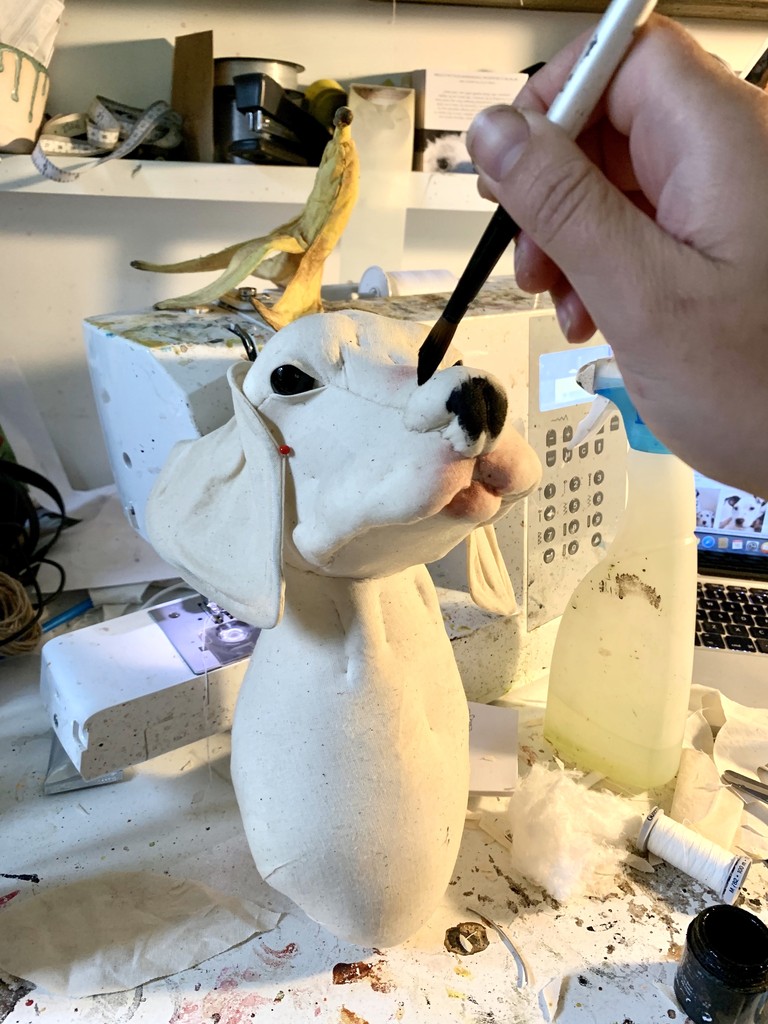
This is quite a scary stage, especially if it is a large piece that has taken a long time to sculpt. I paint them with several watery layers and let it dry between each layer to build up depth. I like when the paint create a pattern on the fabric, a bit like a glaze or a watercolour painting. I finish by adding things like eye lashes and usually sit them on pieces of rough wood or driftwood as the contrast between the fabric and the wood works well. I always have between 10-15 sculptures on the go at any time, that way I can work on what I feel like, be it sewing, painting or finishing.
Do you see your work as therapeutic and if so why?
Not therapeutic, I’d say it’s necessary for my well being. I don’t know if it’s the fact that I don’t make sketches, I just have the ideas in my head until I make them and, I tell you, it gets crowded in there.
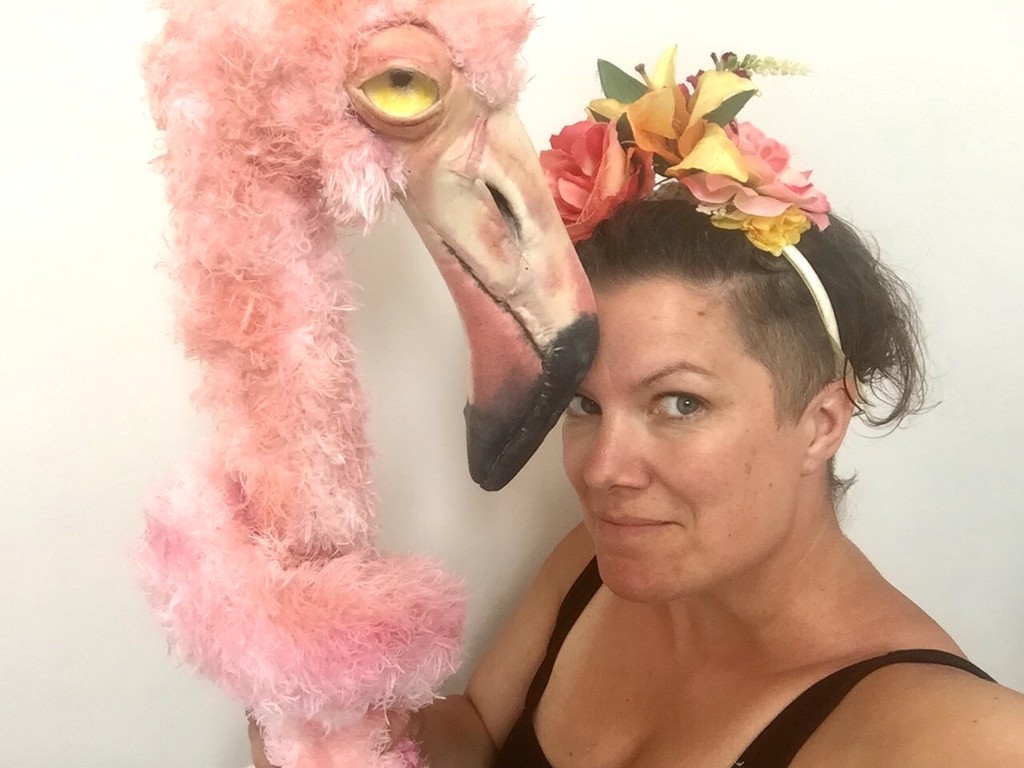
Take one or two pieces that are ‘very’ whimsical – discuss.
Is it the facial features?
Lately I have developed a bit of an obsession with adding things to the heads of my characters and I love contrasts so for example I made a toad with bunny ears. His angry face and drooping fag contrasted so well with his cute bunny ear headband and fluffy tail. I can imagine the profanities he’d like to shout at me, it makes me smile and sometimes that’s enough.
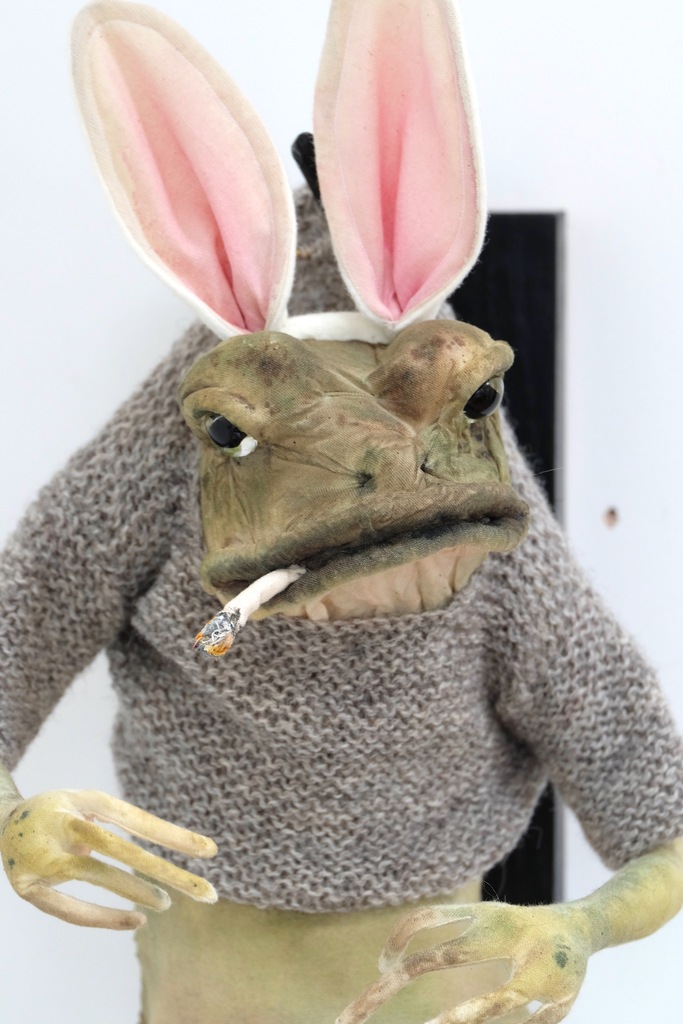
Is it the pose?
I also made a hare sculpture sitting on a heavy piece of wood and here it’s definitely the pose that makes the piece. He looks slightly tipsy, like he’s telling a long story about something only he thinks is funny.
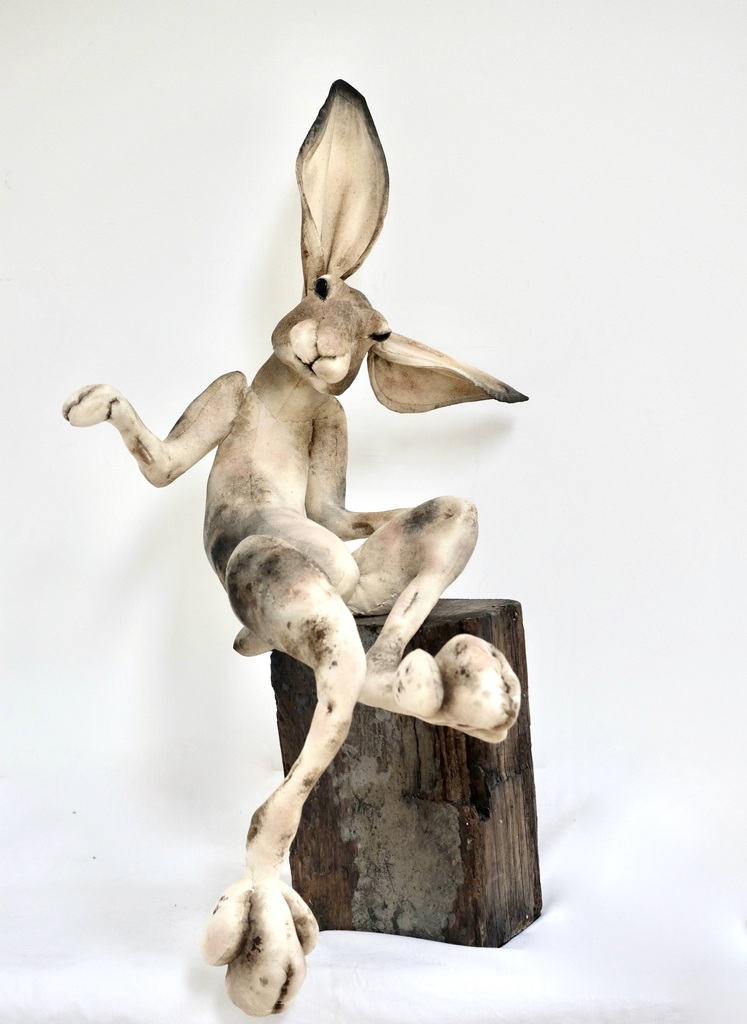
Take your ‘Hanging by a Thread’ series.
How did this project come about?
Like many others, I suffer from environmental anxiety and the total sense of powerlessness can keep me awake at night. I needed to feel like I did something, contributed however small. I had made a couple of pieces hung up by their jumpers and was contacted by one of my followers that told me how uneasy they made her feel. She was asking me to stop making them but her comment made me interested to take it further. If one piece made her uncomfortable, perhaps a whole alphabet would be an effective way to shine some light on the threats to so many of our wildlife.
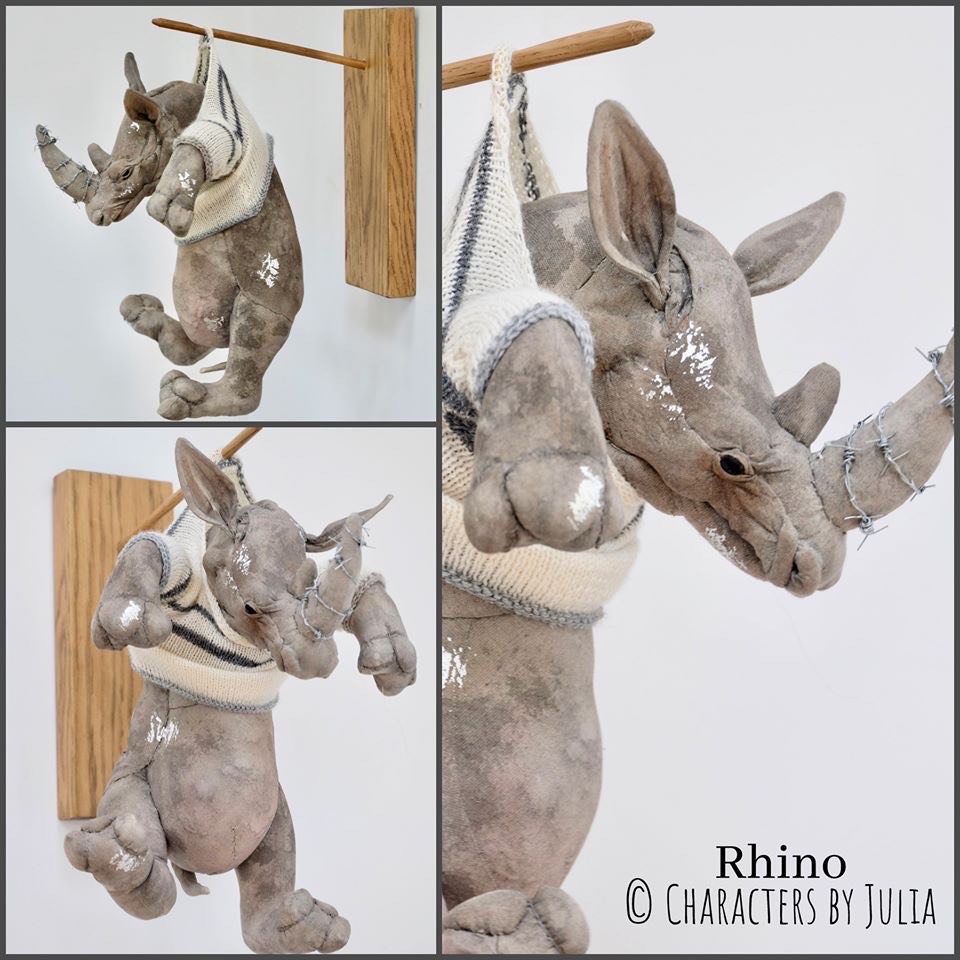
My goal was to make one textile sculpture for each letter of the alphabet depicting unusual, vulnerable and endangered species and also highlight some of the threats excessive packaging used in supermarkets, global warming, commercial fishing etc. That’s how the idea came about and I started thinking and researching what animals I wanted to highlight.I decided to do it as a sponsored challenge in aid of WWF UK so I set up a JustGiving page and people could donate the same way some people get sponsored to climb a mountain or run a marathon. I also set a target for donations and if I reached that target I would raffle out a commission piece at the end of the challenge and your donation would act as a raffle ticket. In the end we donated over £5000.00 which was great.
Why have you dressed the animals?
It was the animals hanging by their jumpers that started everything, they looked so vulnerable and in need of assistance, at our mercy. Just like our planet is, and we are anything but kind to her. It also helped to use the clothes as a way to highlight different issues, like the Walrus hanging by a tropical shirt.
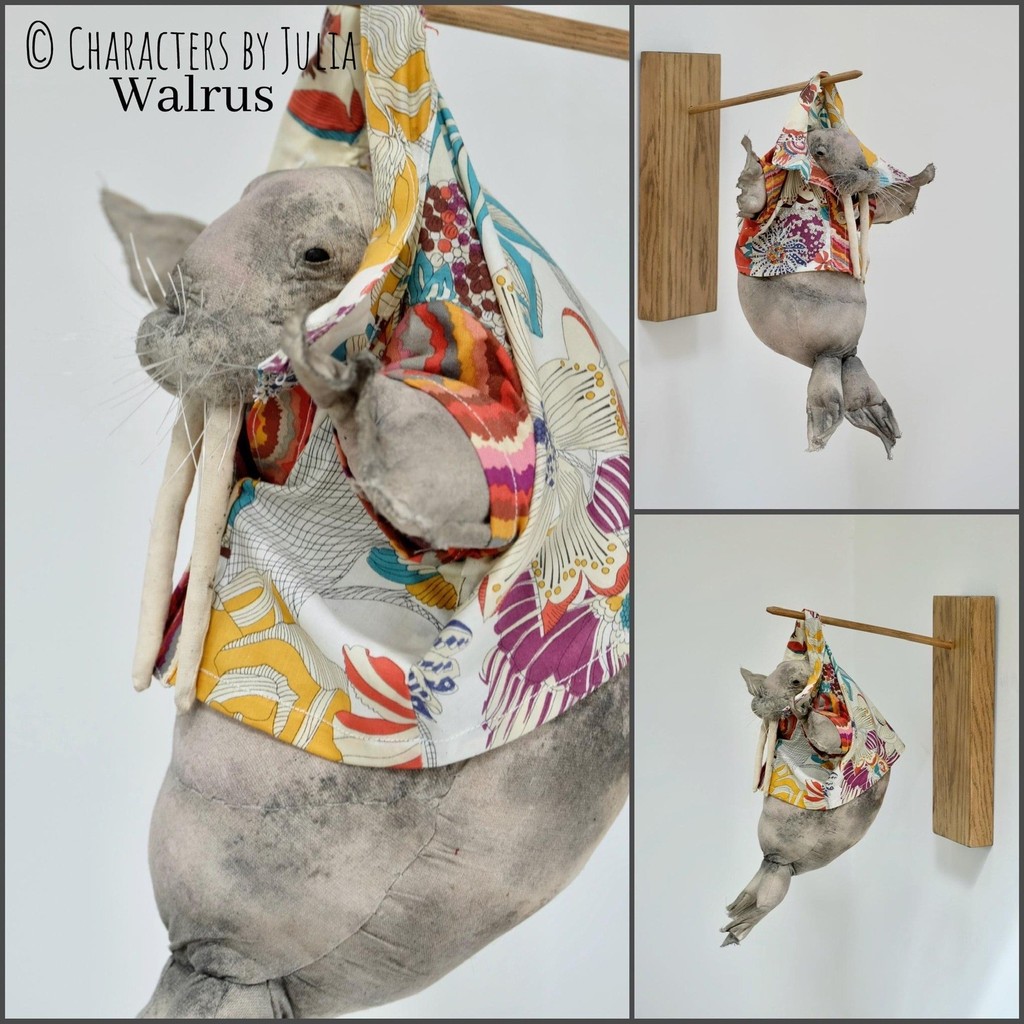
Global warming and melting ice is a huge problem for walrus. The Jaguar hung by a faux fur coat to highlight not only the fur trade but all the endangered animals that are hunted for pelts, scales, glands, fins, shells etc.
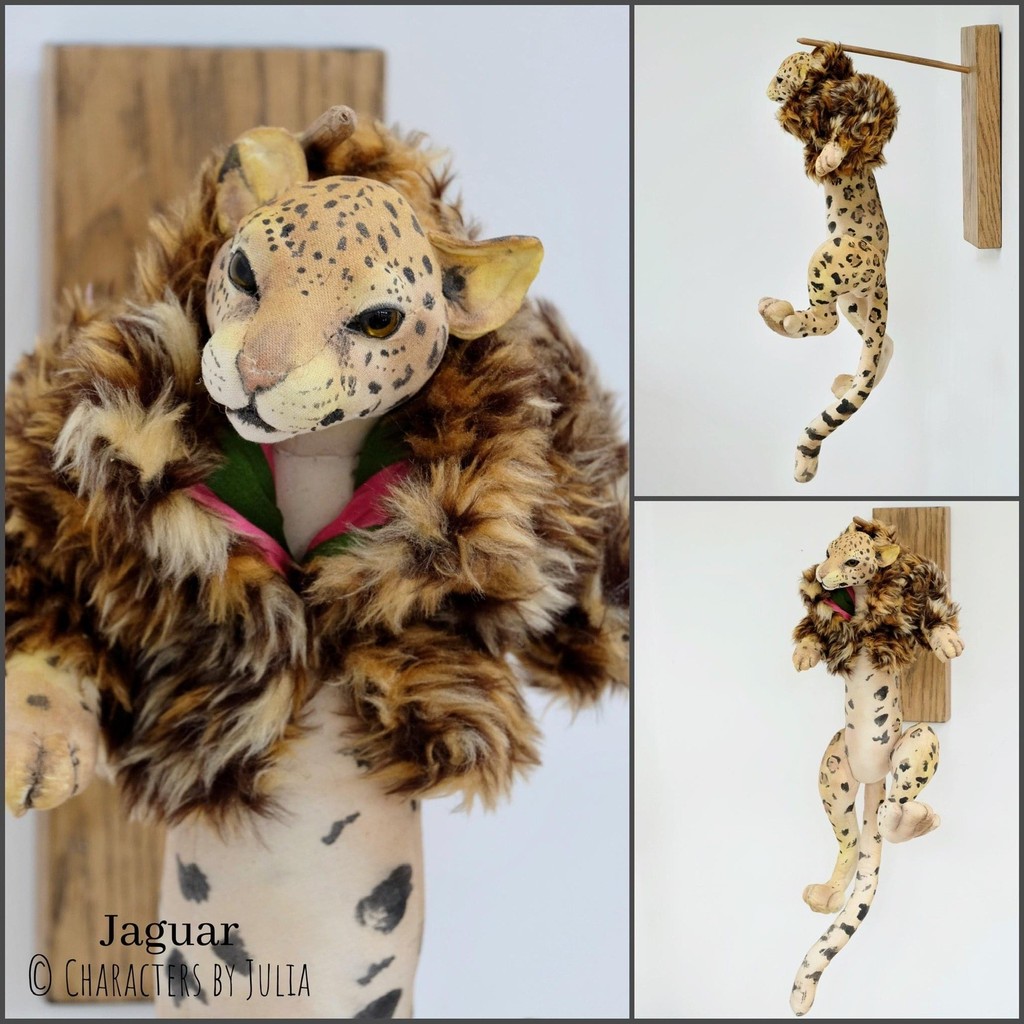
One of my followers suggested the name “Hanging by a Thread” and that was just perfect for the collection. My mum is my knitting collaborator, and she created a stunning array of beautiful jumpers that they could hang from. The journey to make them all was amazing; challenging, exhausting, emotional, often sad but also thrilling and I felt so much support during the whole experience.
Did it help to use the alphabet as a tool?
It certainly helped to bring the collection together and give structure. I needed a beginning and an end or goodness know where it would have ended up.

What was the biggest challenge when making such a large body of work?
It was a real challenge to find different ways to depict the different issues. To be varied and still keep a theme. I painted a Commercial Trawler tattoo on the Hammerhead shark and hung the Vaquita from a plastic net used as fruit packaging. The issues are endless. The Xenarthra (sloth) is climbing through denim to point to the unsustainable and heavily polluting fashion industry.
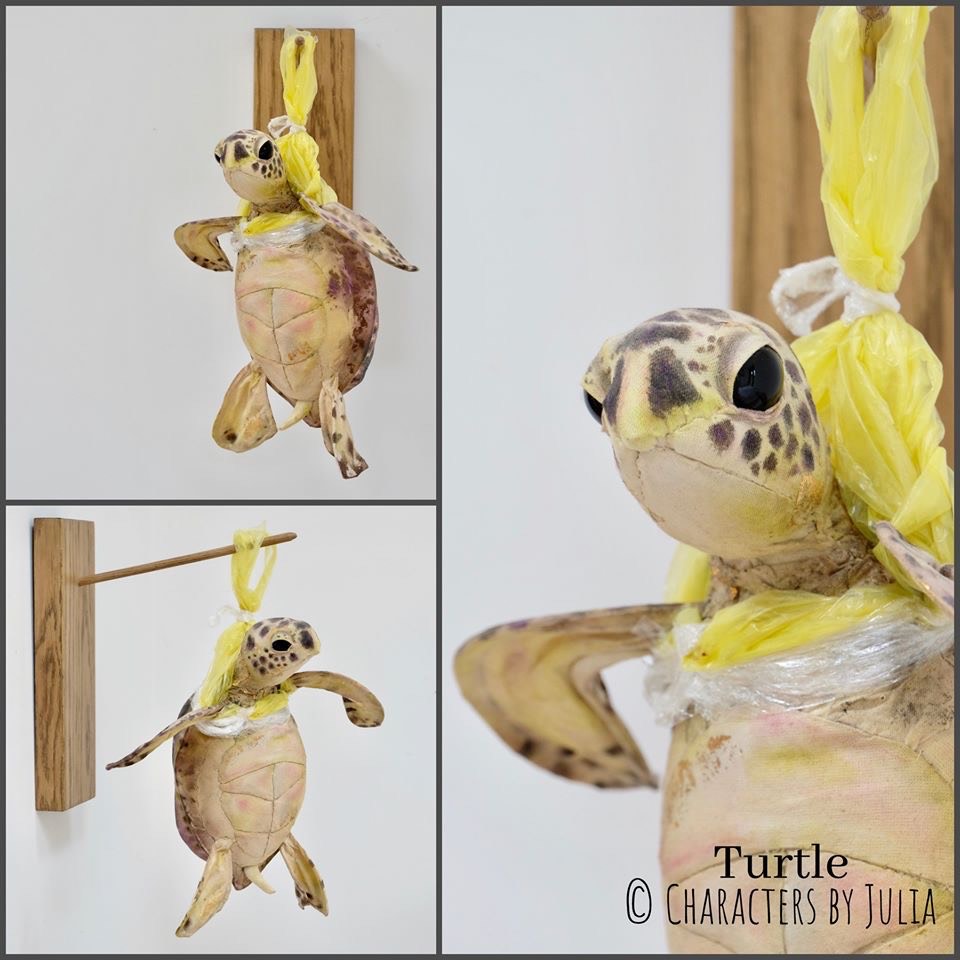
The Turtle also hung by plastic as our seas are so full of the stuff and the stripes of the Zebra disappearing as a symbol that we are running out of time.
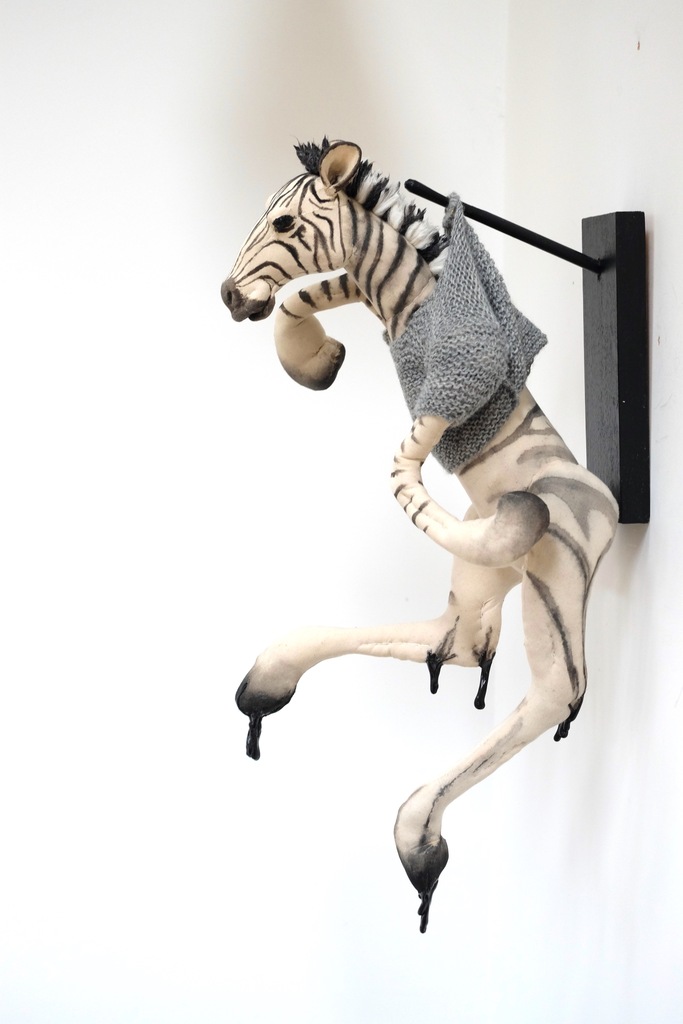
You did not work through the project alphabetically. Which two animals came first and which last, and why this selection?
Again, I let inspiration be the deciding factor. I had a list of the alphabet with options for each letter. I tried to get a good selection of different animals, locations and issues and made what inspired. I did actually start with Aardvark but then jumped to Orangutan and ended with Quokka
Why did you restrict the size range of 30 cms to 85cms?
I didn’t restrict it, it’s just what happened. Cutting free hand makes them all different and I go up and down in size, I must have been especially excited about the Uakari as he ended up so much bigger than the others, he was also one of my personal favourites. I always listen to audio books when I work and I was listening to His Dark Materials trilogy by Philip Pullman and it felt like I was making my daemon.
Have they been together and where and where have some gone to?
My aim was always to find a venue for them and display them as a group. Ideally I would have liked to be able to raise more awareness and funds perhaps auctioning them off and I was gearing up to start contacting organisations. Putting myself out there is not my strength. WWF UK was in touch and very supportive during the process of their making but they didn’t have any venue suitable for them. It was starting to feel like a pressure. I was also stressing because we are due to move to smaller accommodations awaiting to build our house on a croft that we are making into a small holding. The thought of them all in storage in the humid Scottish air was not good. When Covid 19 hit and lockdown was a fact I let myself off the hook and decided to find them homes individually. I was delighted when they all found loving homes in record time. It’s a shame they were never able to be displayed as a group but sometimes you just need to move forward.
Tell us about the Spring Salon ‘Vårsalongen’ in Stockholm and your entry in 2019.
Since I was about 15 I dreamed about having a piece represented at Vårsalongen. It is such a dynamic venue where a group of judges (they change every year but are always distinguished in their fields) pick out pieces based on the pieces alone, not the artists age or CVs, just the piece. The mix is usually very inspiring and it’s a big yearly event in Stockholm, I think 2021 will mark the 100th exhibition. My contribution was “Monkey” a quite large monkey sculpture made to look like an old fashion pull toy with wooden wheels but if you look closely the wood has gone through the flesh of the monkey and he’s bleeding.
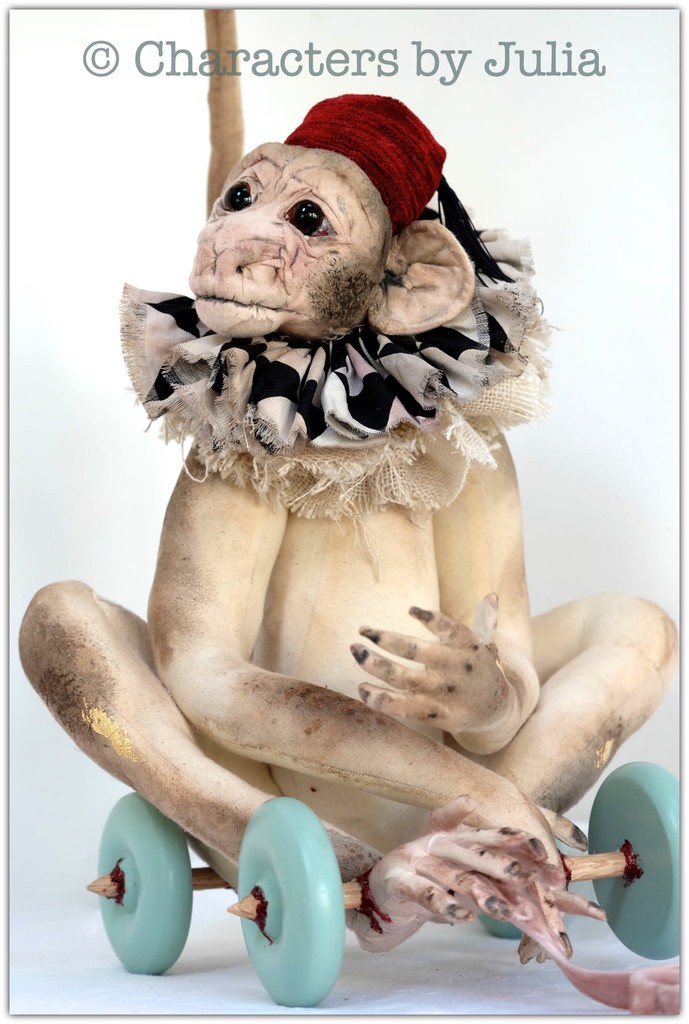
My hope is that he’ll make us think of the way we treat our wildlife and planet as a whole. I was so happy to be selected and travelled to Stockholm to be part of the opening in January. It was fantastic to meet some of the other artists and see the exhibition with my monkey included.
I love your hares, please comment on ‘Hare today – Gone Tomorrow’.
I love hares too, they’re my go-to animal.
I think it’s because I had a pet rabbit growing up and spent most days, watching her, sketching, painting and sculpting her. I got to know the features and body well.
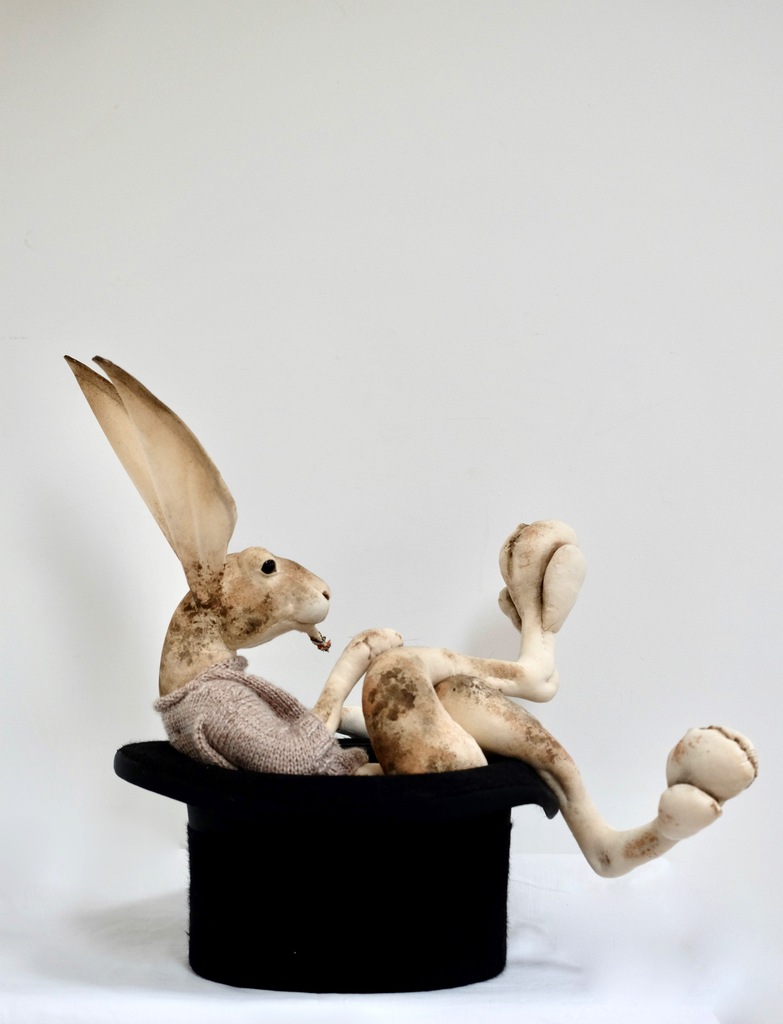
Although my hares usually sport larger than life feet, simply because I like big feet. I was approached by the fab owners of The Imaginarium in York, a shop where magic is real, and where I had displayed my pieces for a year or so. They asked if I would like to create 9 hare sculptures to be displayed in their window for Easter. Well, I was thrilled to oblige and the result was amazing, they did such a fab job displaying them.
You do not have a sale, rather an adoption, discuss.
I think it’s because they’re such characters and they invoke emotions, I know several people who speaks to their sculptures. Adoption is a nicer sentiment than sale. They’re re-homed and I miss every single piece but I’m also so humbled and so happy that I can make a living doing something I love so much. I have the best job in the world!
How do you use different ways to hang, hold and position your animals?
I love to make free standing sculptures but there is something about a wall sculpture that really changes the dynamic in a room. I am forever working out new ways to display them and to find the right narrative and movement. I usually have an idea but, as I’m starting to create, it can change direction totally. That is another reason I don’t take many commissions, the freedom to change my mind is important as that can take a piece to a new and unexpected place. I am starting to explore more emotions and facial expressions as my ability grows, it’s exciting.
You are currently dealing within a pandemic but also exhibition at Union Gallery. Can you give us some of the background to this exhibition and working with Alison Auldjo?
Alison contacted me after I had shared photos of the Monkey sculpture for Vårsalongen and she was so excited about my work. Union Gallery seemed like such a dynamic place and I felt it would be fantastic to have my pieces represented there. Delivery was postponed by Covid-19 but we kept in touch during lockdown and I was spurred on by Alisons energy and exuberance. She also very much left me free to decide what I wanted to make and it ended up being a mix of seven different pieces. Some slightly sad and thought provoking (I hope) and some a bit lighter. Originally I wanted to deliver the pieces in person so I could see the gallery and meet Alison but life gets in the way sometimes and in the end I had to send them. The response I got when they had been unwrapped I will always treasure and the fact that she immediately cleared the window and displayed them all there was amazing. I feel very lucky to have found such a great ambassador for my work.
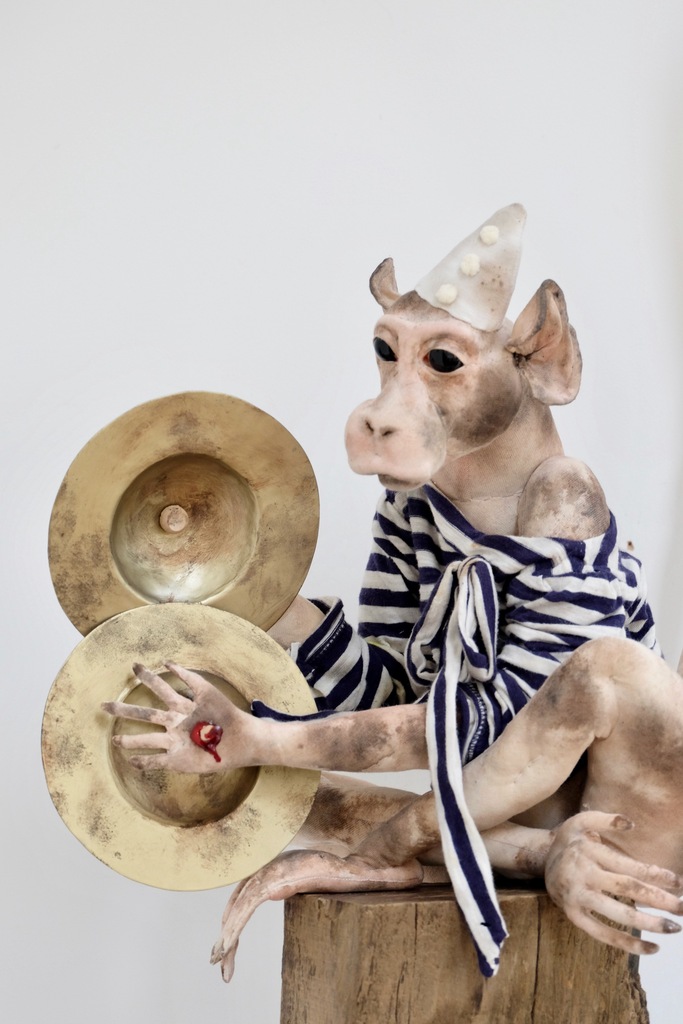
How are you coping with the lockdown and other new restrictions due to the pandemic in relations to your current work?
In the beginning the biggest challenge was the overwhelming anxiety and sadness for the people directly effected by the virus and their families. The anxiety and fear has been with me for many years though as this is how I feel about the global environmental crisis we’re in. So I try to manage it with family time and work. As I both live rurally and work from home the biggest physical difference during lockdown was to have the kids at home.
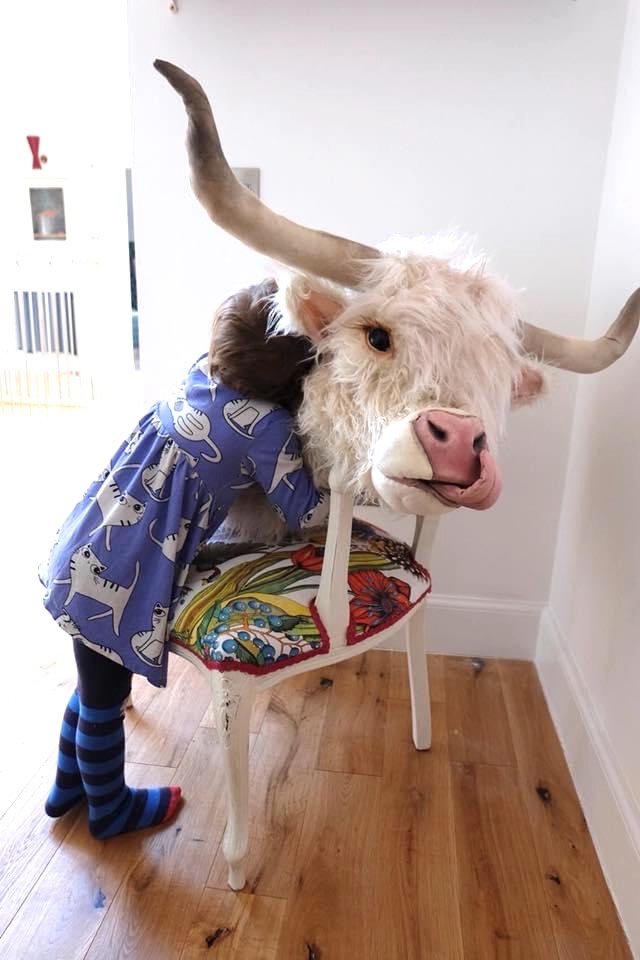
They’re eight and four and I share my messy studio with their playroom which works well as they can play or do crafts when I’m working. The only difficult thing is to get them to tidy their side when my side looks like a landslide. Of course there are also many interruptions but I’m quite used to that. At the beginning of lockdown I thought the first thing people would cut when things got uncertain would be textile sculptures but demand stayed steady so I could keep creating.
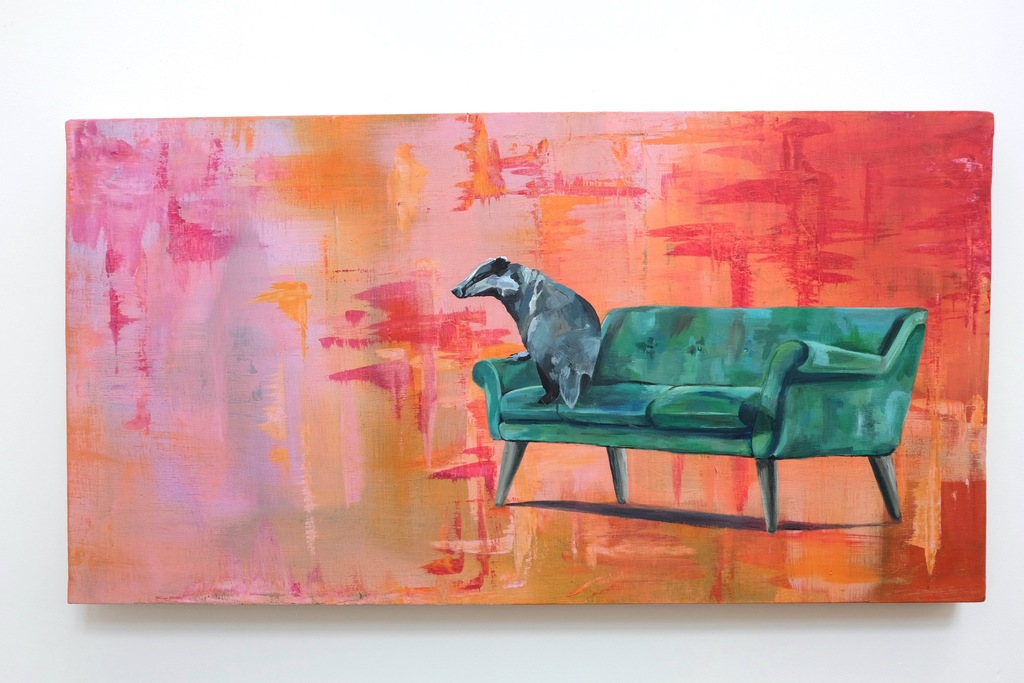
I also picked up painting again after a 15 year break. The urge had been growing inside me for a while and I made some large canvases and used paints I had at home, sometimes it can be freeing to not have unlimited choice. I hope I’ll keep painting.
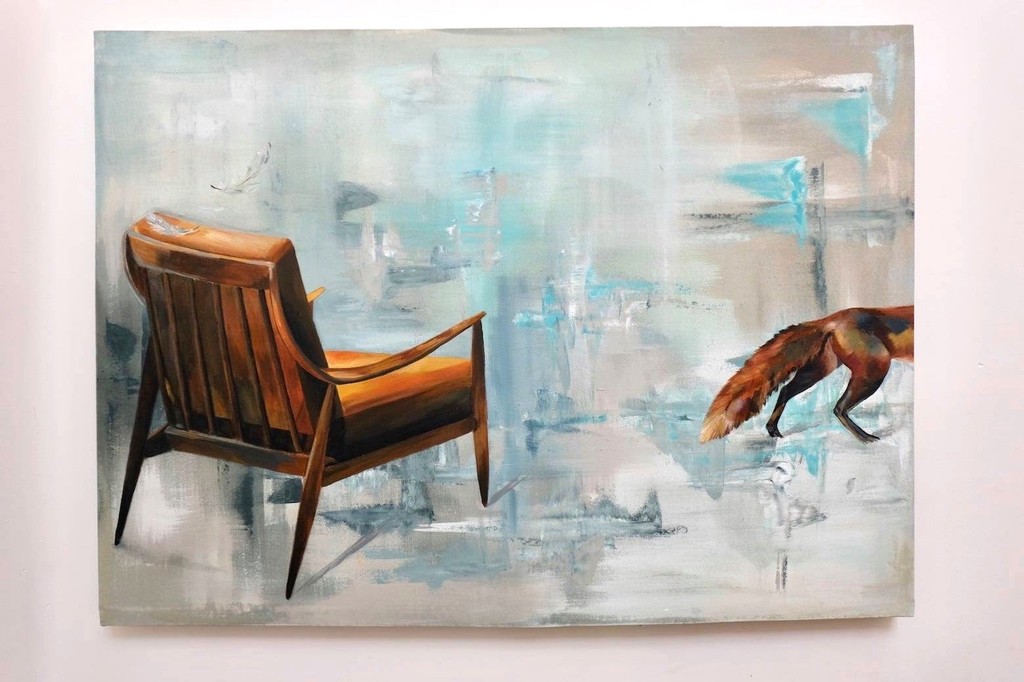
To finish off can you comment on your charity work and how you have been able though your sculptures to help support financially with your art. Please give us insight into two that I am aware of.
Jane Goodall, to celebrate Jane’s 85th Birthday.
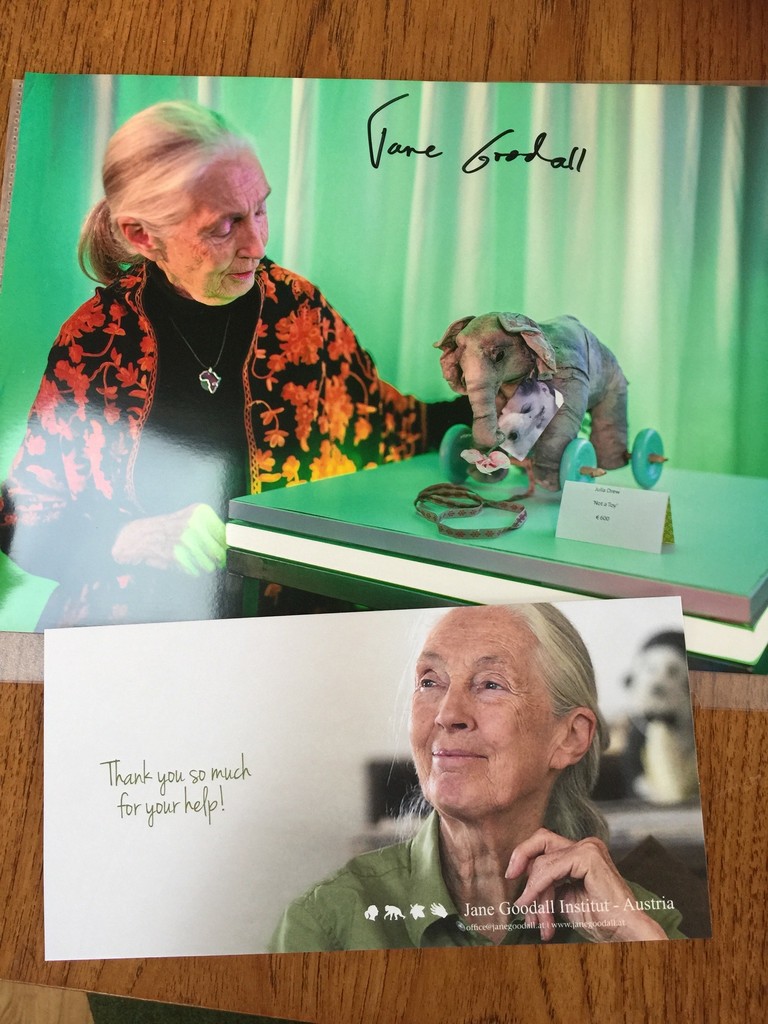 I follow the work of an array of artists on social media and I have become online friends with a couple. It’s amazing to never have met in person but still be able to discuss art and support each other online. One of these is the super talented Janine Heschl who creates mind blowingly realistic thread paintings of animals. It was through her I heard about the charity auction and I entered a sculpture of an elephant.
I follow the work of an array of artists on social media and I have become online friends with a couple. It’s amazing to never have met in person but still be able to discuss art and support each other online. One of these is the super talented Janine Heschl who creates mind blowingly realistic thread paintings of animals. It was through her I heard about the charity auction and I entered a sculpture of an elephant.
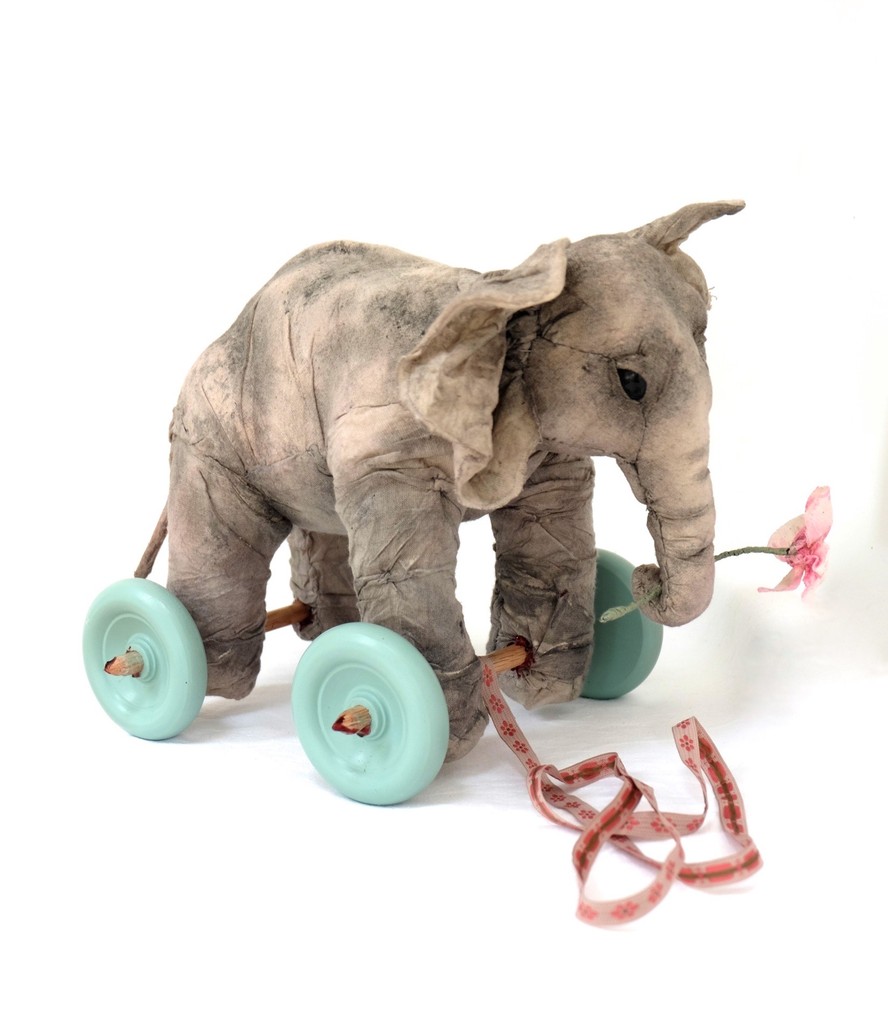
This was the first wounded pull toy I ever made and I was delighted when she was accepted to be part of the charity auction. Dr Jane Goodall’s work is so inspiring, her life a lesson in compassion and I wish we could all take a leaf out of her book. The future of our planet would be better for it.
The Australian Bushfire Relief in 2020
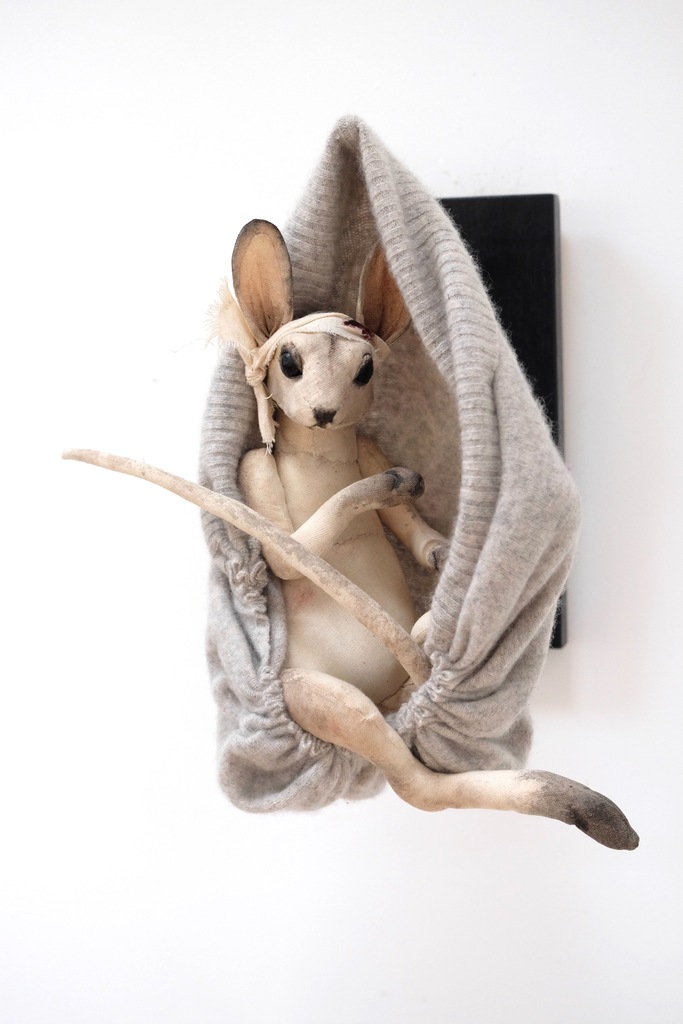
The distressing news of the Australian bush fires at the beginning of the year were so awful that, even from the other side of the world, I had to try to help a little. I created a little wounded kangaroo Joey and created a raffle where donations were made straight to an animal sanctuary on Kangaroo Island. It was a raffle built on solidarity and trust and I was blown away by the generosity shown.
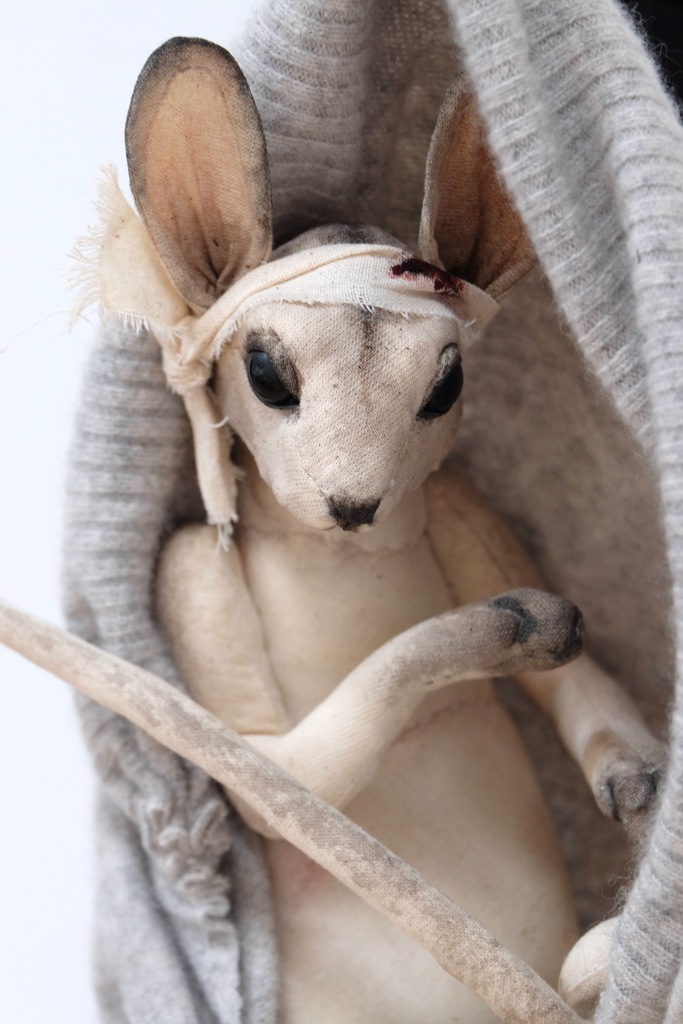
The baby Joey went to a home in America and his bloody bandage could be removed when he was happy in his home.
Julia Levander Drew
Fort Augustus, Scotland
www.charactersbyjulia.com
Deborah Blakeley, Melbourne, Australia
Interview by Deborah Blakeley, September 2020
Think a colleague or friend could benefit from this interview?
Knowledge is one of the biggest assets in any business. So why not forward this on to your friends and colleagues so they too can start taking advantage of the insightful information the artist has given?
Other artists you may be interested in:


